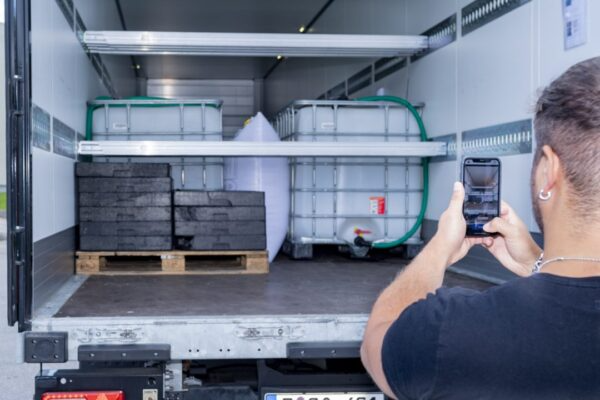The solution presented is aimed at fleet managers. They receive precise digital information via smartphone about how much load can still be added to their trucks. In combination with the corresponding weight data from the vehicle’s intelligent tachograph or the fleet management system interface, scheduling can be optimised – for example, by offering the free capacity on digital freight exchanges so that more routes are driven at full capacity. “The logistics industry is currently facing major challenges. More and more freight has to be transported with fewer and fewer drivers,” says Dr Ismail Dagli, Head of the Smart Mobility Business Unit at Continental. “With our solution, we not only support users in optimally utilising their transport capacities and thus making their fleet more efficient. By saving fuel and CO2, fleets can also make an active contribution to more sustainability in logistics.”
Journeys in which the load space is not fully utilised or even completely unloaded journeys are not uncommon in freight transport. According to official freight transport statistics, commercial vehicles over 3.5 tonnes made more than 150 million empty journeys in Germany alone in 2020 – not including journeys with under-utilised load space. Fleet managers can counteract these journeys in particular by actively looking for additional freight orders and thus better utilising their vehicles. To do this, however, they need the corresponding data, which not only indicate the current position of the vehicle and the loaded weight, but also the loading metres that are still free. The new solution provides them with the latter in real time.
Using the solution is rather simple for the driver, ramp agent and dispatcher: with the help of a standard smartphone, the driver takes a photo of the loading area after securing the load. This picture is uploaded to the Continental cloud, where the actual data processing takes place, i.e. the calculation of the available loading space by the AI algorithm developed by Continental. If the driver wants to edit the information manually or add additional information before uploading it to the cloud, this is also possible via the smartphone. The data can then be forwarded to the dispatching software. Overall, this process takes only a few seconds with good connectivity. Together with the data on the available weight, which the dispatcher receives, for example, with the help of the VDO Link from the intelligent tachograph or by means of classic telematics systems from the FMS interface, he can thus optimally coordinate additional loads.
“Technologically, the AI used in it is based on the years of experience we have gained in numerous projects around driver assistance and autonomous driving,” says Jörg Lützner, Head of Innovation Management in the Smart Mobility business unit and responsible for the development of the solution. “”This means that the dispatcher has precise and reliable data on the load in his system, which is not just based on an estimate. The dispatcher can then offer the load space capacity to freight exchanges or, in the case of larger fleets, distribute it internally.” Lützner emphasised that the solution learns with every use and thus continuously achieves better results – an advantage of artificial intelligence.
The IAA Transportation trade fair takes place from September 20 through 25 in Hanover, Germany.



Leave a comment